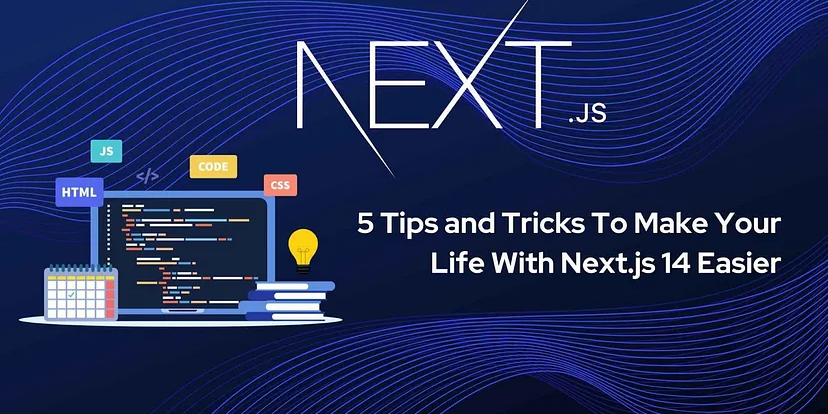Why Is Next.Js 15 Revolutionizing Web App Development?

NextJS 15 Release Candidate (RC) introduces a range of new features & improvements aimed at enhancing the development experience and performance of web applications. This release builds on the strengths of the previous version while at the same time introducing innovative capabilities that promise to streamline workflows and optimize application performance. Below is a detailed overview of the key updates in NextJS 15 RC.
What is NextJS?
Next.js is an open-source web development framework built on top of ReactJS library, that enables the creation of high-performance, scalable applications with Server-Side Rendering (SSR), Static Site Generation (SSG), Incremental Static Regeneration (ISR), simplified routing, image optimization, code splitting, middleware, etc.
Developed and maintained by Vercel, Next.js simplifies the development process by providing a standard structure and built-in solutions for common web development challenges, allowing NextJS development company to focus on writing code in React rather than configuring tools.
What’s New with NextJs 15 RC
To try the latest NextJS 15 use the following command:
npm install next@rc react@rc react-dom@rc
Exciting news for NextJS developers looking to jumpstart their next project! The CLI tool now includes a handy new — empty flag to strip away all the extra fluff. With a single command, you can generate a pristine, minimal “Hello World” page as your starting point.:
npx create-next-app@rc --empty
Support for React 19 RC
Next.js 15 RC fully supports React 19 RC, including the new React Compiler, which is currently in an experimental phase. This integration promises significant performance enhancements and more efficient hydration error handling. The React Compiler aims to optimize code automatically, reducing the need for manual optimizations using hooks like useMemo and useCallback.
Revamped Caching Strategies
Introduced configurable invalidation periods in Next.js 14.2 with staleTimes for client-side router cache, allowing NextJS developers to control cache invalidation more precisely. One of the major changes in Next.js 15 RC is the overhaul of caching strategies. fetch requests, GET route handlers, and client-side navigations are no longer cached by default.
This change ensures that the data served is always fresh, reducing the chances of displaying outdated information to users. NextJS development company now have more control over caching behaviors, allowing for more precise optimization of application performance.
To enable caching for specific requests, you can use the cache: ‘force-cache’ option:
fetch('https://...', { cache: 'force-cache' });
Partial Prerendering (Experimental)
Next.js 15 introduces an experimental feature called Partial Prerendering (PPR). Building upon the foundations laid in Next.js 14, PPR allows developers to incrementally adopt a hybrid rendering approach.
With PPR, you can wrap dynamic UI components in a Suspense boundary and opt-in specific Layouts and Pages for partial prerendering. When a request comes in, Next.js will immediately serve a static HTML shell and then render and stream the dynamic parts in the same HTTP request. To enable PPR, set the experimental.ppr config option to ‘incremental’ in next.config.js:
const nextConfig = {
experimental: { ppr: 'incremental', },
};
module.exports = nextConfig;
Once all segments have PPR enabled, you can set ppr to true to enable it for the entire application.
New next/after API (Experimental)
The next/after API is another experimental feature in Next.js 15 RC. This feature enables developers to perform secondary tasks or cleanup operations without blocking the primary response. This addition provides more flexibility in handling post-response logic, allowing for cleaner and more efficient code management. Potential use cases include analytics logging, resource cleanup, or additional data fetching after the initial response.
To use it, add experimental.after to next.config.js:
const nextConfig = {
experimental: { after: true,
},
};
module.exports = nextConfig;
Here’s an example of how to use next/after:
import { unstable_after as after } from 'next/server';
export default function Layout({ children }) {
// Secondary task
after(() => {console.log('Response finished streaming');});
// Primary taskreturn
<>{children}</>;}
create-next-app Updates
The create-next-app tool, used for generating new Next.js projects, has received a fresh new design in Next.js 15 RC. Additionally, it now includes a flag to enable Turbopack (defaults to No).
Turbopack is a high-performance JavaScript bundler designed to replace Webpack, offering faster build times and an improved development workflow. This update simplifies the setup process and enhances the overall development experience.
To enable Turbopack:
"scripts": {"dev": "next dev --turbo",
"build": "next build",
"start": "next start",
"lint": "next lint"}
Bundling External Packages (Stable)
Next.js 15 introduces stable configuration options for optimizing the bundling of external packages in both the App Router and Pages Router. These improvements aim to enhance cold-start performance and provide developers with more control over how external dependencies are included in their applications.
Hydration Error Improvements
Hydration errors, which occur due to mismatches between server-rendered and client-rendered content, have been a common issue in Next.js. Building upon the enhancements made in Next.js 14.1, Next.js 15 further improves the NextJS developer experience when encountering hydration errors. The hydration error view now includes more informative error messages, source code snippets, and suggestions for resolving the issues, making debugging more efficient.
Final Thoughts
While Next.js 15 RC is not yet the official major release, companies and developers should not wait to explore its potential. Embracing the opportunity to experiment and test new features in the Next.Js 15 RC version allows for a smoother transition and faster adoption once the official release is available. By getting a head start with Next.js 15 RC, you’ll be well-prepared to leverage its full capabilities.
Next.js 15 Release Candidate brings a wealth of new features & improvements to the existing system that empower the Next.js development company to build high-performance, dynamic web applications with ease. From React 19 RC support to caching updates, partial prerendering, & developer experience enhancements, this Next.js 15 release sets the stage for the future of Next.js development.
As always, it’s of utmost importance to carefully evaluate these new features, test them thoroughly, & provide feedback to the Next.js team. By collaborating with the community, we can shape the direction of Next.js & create even more powerful & efficient web applications.
Tired of going back and forth to use different AI tools? It’s time for a upgrade! Onyxium AI is a All in one AI platform that will transform your programming life into a high-performance machine. Curious to see what’s possible? Reach out & let’s have some fun building the future of your web presence.

